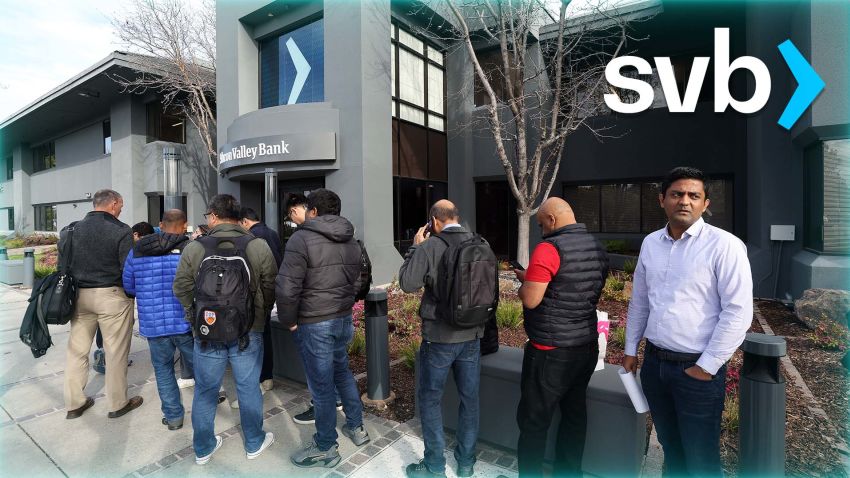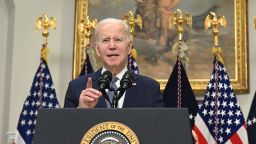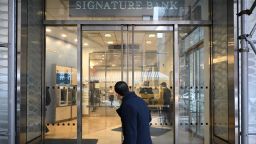Editor’s Note: Lanhee J. Chen is a regular contributor to CNN Opinion and the David and Diane Steffy fellow in American Public Policy Studies at the Hoover Institution. He was a candidate for California state controller in 2022. He has played senior roles in both Republican and Democratic presidential administrations and has been an adviser to four presidential campaigns, including as policy director of 2012 Mitt Romney-Paul Ryan campaign. The views expressed in this commentary are his own. View more opinion on CNN.
When Silicon Valley Bank collapsed this month, analysts and policymakers quickly began considering how to prevent similar failures from happening in the future. While there are changes that lawmakers should consider, when it comes to financial regulation, history shows us that politicians are usually reacting to the last crisis and one step behind the next one.
The savings and loan crisis of the 1980s led to passage of the Financial Institutions Reform, Recovery, and Enforcement Act of 1989, which closed insolvent financial institutions, created new regulatory agencies and implemented restrictions on how savings and loan (or thrift) institutions could invest deposited funds.

The 2007-2008 financial crisis led to passage of the sweeping Dodd-Frank Act in 2010, which revamped federal regulation of the financial services sector and placed restrictions on how banks do business. Amid criticism that Dodd-Frank had gone too far in regulating banks, a bipartisan coalition in Congress passed, and then-President Donald Trump signed into law in 2018, some rollbacks of Dodd-Frank’s requirements pertaining to small and midsize financial institutions.
Democrats have largely blamed this rollback of regulations for SVB’s demise. Many Republicans, for their part, have focused their aim on whether the bank’s leadership spent too much time pursuing “woke” policies on diversity and sustainability rather than ensuring depositors were protected.
The fact that there is so little overlap between Republican and Democrat critiques in the wake of SVB’s collapse illuminates the challenging road ahead for bipartisan policy solutions to avert a future similar failure. If the two sides can’t even agree on the principal cause of the bank’s failure, it’s unlikely there will be consensus on the policies needed to shore up the financial system for the future.
But they should. While Democrats generally favor more aggressive oversight of the financial system and Republicans largely argue that the current regulatory scheme is sufficient, the right answer looking ahead is somewhere in between.
In the wake of SVB’s failure, some regulatory interventions have come into focus and could form the basis of policy discussions in the coming weeks and months as Congress considers how to respond to the current banking crisis.
First, SVB’s demise came when a lack of liquidity (or a shortfall of cash on hand) left it unable to pay out depositors when they came looking for their money. The bank had invested a disproportionate amount of assets in long-term debt that was purchased at a time when interest rates were much lower than they are today. When the bank attempted to liquidate this debt over the last few weeks, it was forced to do so at a significant loss. SVB failed to hedge against risk by diversifying its investments.
When depositors tried to withdraw $42 billion in cash from the bank on a single day, SVB’s cash shortfall generated a panic among those who had deposits at the bank and raised concerns about the health of the US banking system more broadly.
Just as individual investors are often advised to diversify their investment strategies to minimize risk, so too might politicians look to requirements that banks ensure that they have proper diversification in how they are investing their assets.
Further, some Republicans and many Democrats are also calling for expanded deposit insurance so that bank deposits over the current federal cap of $250,000 are also insured. Democratic Sen. Elizabeth Warren of Massachusetts, a vocal supporter of increased financial sector regulation, has called for increased deposit insurance that would be paid for by banks. Democratic Rep. Ro Khanna of California is expected soon to introduce legislation that raises or removes the insurance cap entirely, such that deposits of all amounts will be protected.
Some Republicans have joined them in addressing the insurance cap. Republican Sen. J.D. Vance of Ohio, for example, has argued that lifting the cap (for example, by ensuring the cap keeps up with inflation) would equalize the playing field between large banks and smaller local and regional ones. Republican Sen. Mitt Romney of Utah has suggested that larger depositors might be insured up to the entire amount of their deposits in exchange for a small fee.
If Congress moves toward increasing or eliminating the deposit insurance cap entirely, it should do so carefully. Depending on how the policy is constructed, such changes could disproportionately benefit wealthier institutional depositors or encourage bad behavior by banks if they know an open-ended bailout is waiting on the other end of risky investment decisions.
Finally, some changes will undoubtedly come through the Federal Reserve, rather than Congress. This is probably a good thing, as these policymakers have some insulation from the political forces that directly affect lawmakers.
The Federal Reserve, for example, will likely examine the extent of both capital and liquidity requirements at banks based on their total assets. A bank’s capital is the difference between its assets and liabilities or, put another way, the resources a bank has to ultimately absorb losses. Liquidity, by comparison, is a measure of the cash and assets a bank has immediately on hand to pay obligations (such as money that depositors might ask for).
America’s central bank may also look at the content of “stress tests” created by the Dodd-Frank Act and designed to regularly assess the health of large financial institutions across the country. For nearly a decade, tests have been benchmarked to a low-interest rate environment, which is not reflective of recent conditions.
But ultimately, the Federal Reserve is not blameless in the collapse of SVB as it created a fertile environment for the bank’s failure by keeping interest rates as low as they were for as long as they were. Lawmakers should do their part to make sure people understand that monetary policy has far-reaching impacts.
While the best way to prevent the next SVB is likely to be viewed by policymakers through partisan-tinted glasses, there are avenues for Democrats and Republicans to work together. But the window to do so is narrow and closing. This time next year, we’ll be in the throes of presidential primary elections, and neither party will be particularly interested in compromise — even if that’s what our financial system needs.








